Peoples almost totally devoid of material techniques, such as Pygmies and Bushmen, retain a background of rather complex religious structures that have not passed through the stage of an "original totemism", presupposed by a certain cultural anthropology of an evolutionary setting as one of the obligatory stages. of a hypothetical progressive trend. Hence the hypothesis of a very ancient diffusion of these pygmoid populations, perhaps to be put in relation with the Old Testament figure of Lilith and with other mythical characters of the archaic traditions, such as Vamana, the fifth avatara of Vishnu, who significantly appears in the sacred iconography with the likeness of a dwarf.
di Michael Ruzzai
originally published on Heretics Mind
In previous articles I mentioned the concept of "Double phase" of female deployment; a cosmological and anthropological concept together which, let us recall, involves an initially "free", promanative / expansive moment, and then a more firmly "harnessed" moment, anchored to the virile element. Well, the starting hypothesis is that this "double phase" could be connected to a parallel and corresponding "double state" of the Male; a theme probably related to the mythical episode of "Adam's sleep", which takes place from the beginning of the Second Great Year of our Manvantara. Following this line, now then we could imagine Adam in a similar double dress, that is, at the beginning - during the "sleep" - in a "latent" situation, and subsequently "awakened" to a new consciousness.
The first phase - which we will analyze more specifically in this article, leaving the second to the next - would therefore take place in a "night" mode and connected to the birth of Lilith, here having a more general meaning (ie, as we have seen, all human materiality); a modality that also seems to propose itself quite clearly, given the clear ones mythical references that connect her to the night, to the nightmares of sleep and, above all, to her own symbolic juxtaposition with the Moon, in particular with its "black" phase.
In more general terms it can be said that the Moon notoriously personifies the female being, and this above all in its perennial aspect of mutability and variability; a concept that seems to be attested in various areas of the world (America, Pacific, South Asia, Mediterranean, Africa), especially in the idea that the selene star represents the fundamental symbol of cosmic becoming. The most evident manifestation of this is in fact the continuous alternation of the lunar phases with the incessant movement from the black Moon to the full Moon: therefore a visible manifestation of the time factor and which not by chance now implies the entry into the field of its most known, that is Kronos, the titan with the scythe, very clear selenic symbol.
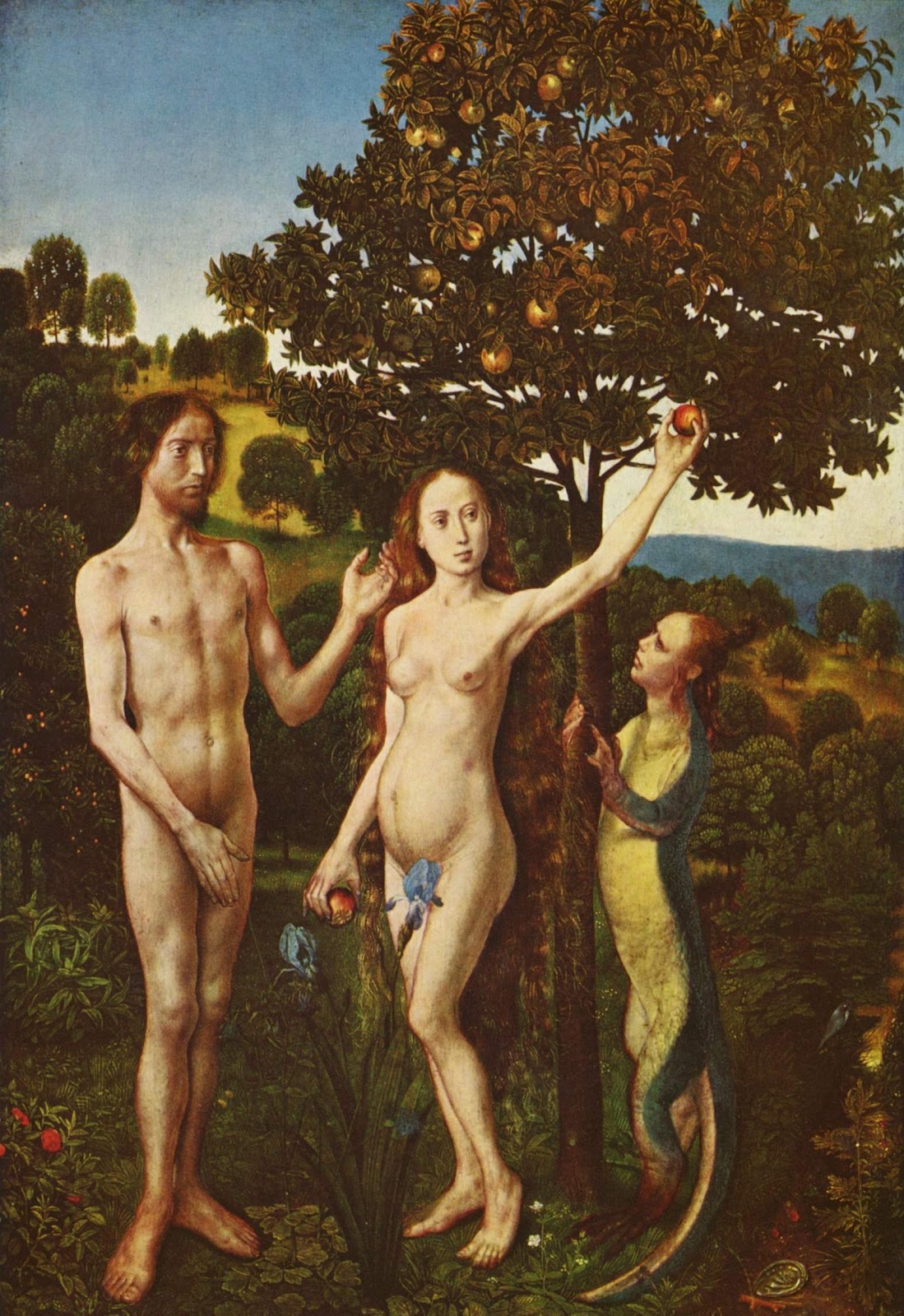
If the black Moon in the myth is juxtaposed to Lilith, on the other hand it seems natural to place Eve in relation to the full Moon.: phase, at least initially, of agreement with Adam, which from this point of view is correlated to the Sun (as we will see also in the next article) and from which it receives and reflects light to its maximum extent. Hence the possibility that the two women can also be considered according to a modality that places them chronologically in sequence, an aspect that actually transpires when Lilith is remembered as Adam's first companion, preceding Eve herself. Moreover, it is interesting to note how, in Iranian mythology, the Primordial Man Gayomart unites precisely with two queens with opposite characteristics, one White and one Black; in the context of a possible multiple interpretation of traditional symbols (already underlined several times above), in my opinion everything depends on the meaning we attribute to the Primordial Man, from which it will follow that to be assigned to the white queen (Eve) and to the black queen ( Lilith). In particular, the latter may represent, as we have seen, the broader concept of human physicalization (and, for example, Eve the "subtle" part of the individual manifestation, as a paradoxical synonym of the psychic Adam); but, on a more restricted level of interpretation, I believe that Lilith can also symbolize - notably as a "black queen", analogous to the Moon that "flees" from the sky and becomes dark - a single fraction of corporealized humanity, namely the "southern" and basically "melanoderma". Up to even reaching, as we shall see, a specific branch of this.
In my opinion, this is precisely the point at which he intervenes the first, radical, human dichotomy - the North-South one - an event that was emphasized above all in the interpretative approach adopted by Julius Evola; which, not surprisingly, defines the black races as "nocturnal". With regard to the "southern" meaning of Lilith, some mythical hints seem rather eloquent such as, for example, the juxtaposition that was made with the Harpies, creatures that - very important detail - in the Hellenic corpus are attacked and hunted by the children of Boreas. In the Jewish tradition Lilith refuses to submit to Adam and therefore soon enters into conflict with him: then she pronounces the name of God, obtains the wings to move away from the Earthly Paradise and head, despite the regret of the irreversible Edenic loss, towards the shores of the Red Sea (other points of the myth come to place it as far as black Africa).
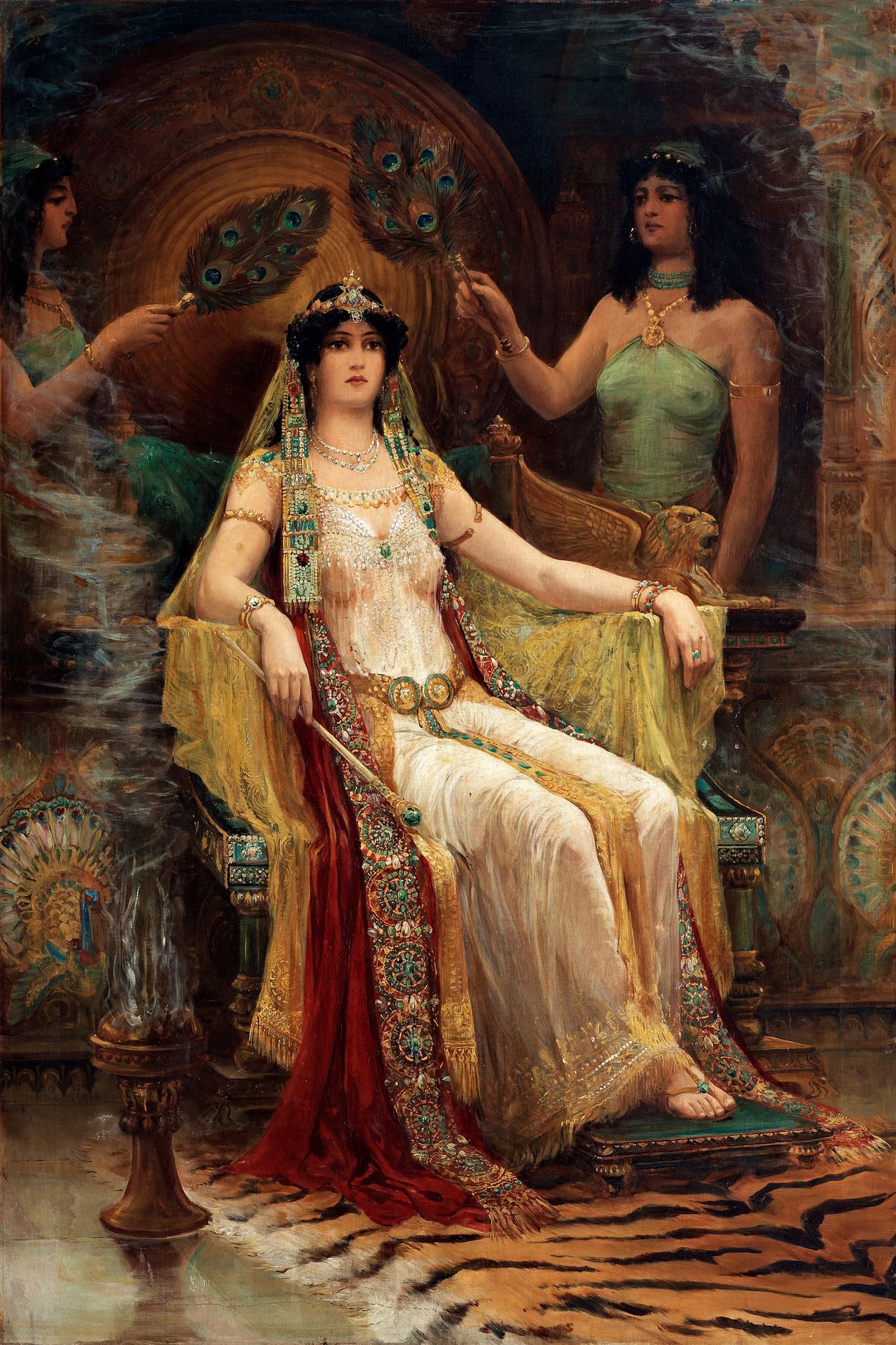
A further Arab-Jewish element directly associates Lilith with the Queen of Sheba, a figure who, according to some traditions, is connected to the lineage of the "Jinn", the "Genes", beings of the psychic world who will establish an ambivalent relationship with ordinary humanity (and which will be the subject of one of the next articles); however, it is extremely significant that the Queen of Sheba has often been considered a symbol of the far south and called the "Queen of Austro". Furthermore, in the Jewish apocryphal tradition it also comes described with the webbed feet of the goose, a sign considered demonic and connected to an animal which, as already seen in the previous "Unity, duality and human multiplicity", Represents a" totemizing "regression of the same hyperborean symbol of the Swan, as a darkening of the pure Olympic luminosity with the prevalence of the changing theme, vital and linked to the inexhaustible generative fecundity.
But it doesn't seem too risky to me either to approach Lilith also to the figure of the angry Bear, when, in various narratives, this appears as the animal transformation of a woman that she once had refused their role rejecting all suitors; the bear's behavior has notable analogies with that of Lilith, who in the Jewish myth does not accept the role of subordination towards Adam, perhaps to symbolize the rebellion of a first fringe of kshatriya towards the superior priestly authority, thus creating the conditions for his early exit from the Nordic headquarters.
I also believe that the part of humanity that can be approached to the figure of Lilith can also be compared to the story of Hefestos, the Greek god who in ancient times was cast out of heaven but who is considered, despite being lame and deformed, also a civilizer of humanity, as if to signify the intervention of a very early cultural stratification. Hefestos is considered to have powers of a demiurgic character and various elements would show traces of archaic shamanic-ecstatic forms; but the aspect that seems particularly interesting to me is that the god is often referred to as dwarf, and also that some versions of the myth seem to allude to its deformities as caused precisely by the fall from Olympus.
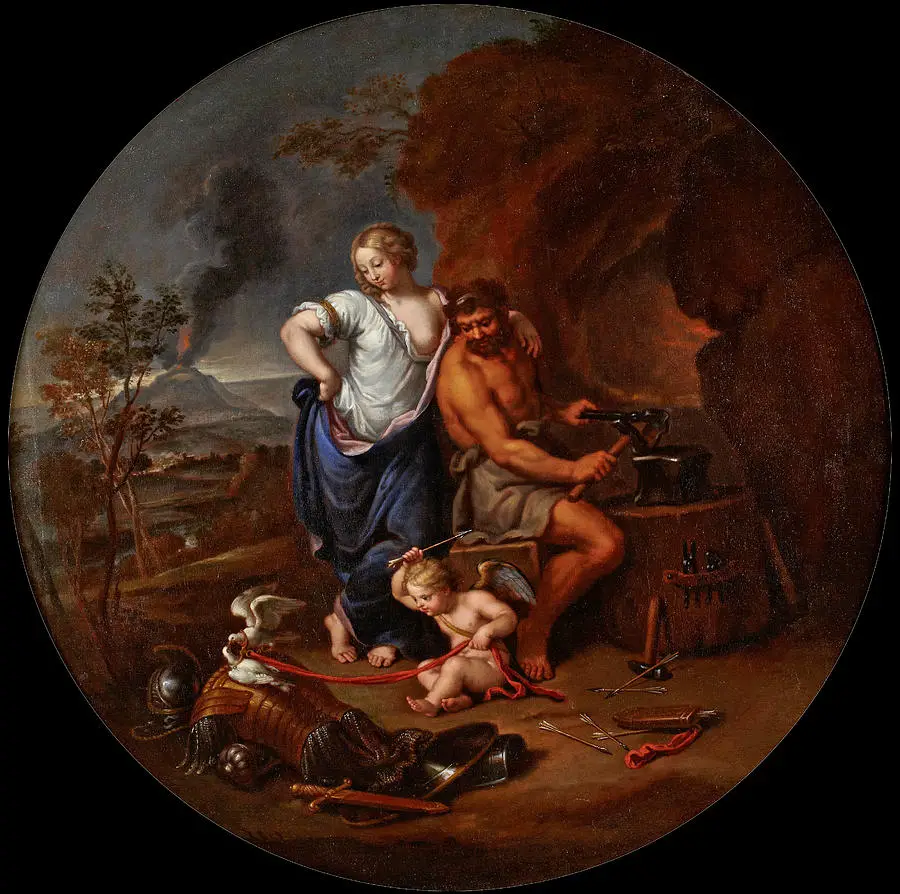
These last points could refer, in my opinion, to the first identification of that particular branch of humanity generically defined as "equatorial" and to the taking over of specific physical characteristics of the "pygmoid" type; characteristics which, as we shall see, by various anthropologists are considered "protomorphic", that is of the greatest antiquity, and therefore, all in all, consistent with that mythical aspect in which an anteriority of Lilith with respect to Eve seems to be highlighted. It is probable that the pygmoid branch will enjoy, on a global scale, a period of numerical and cultural predominance a little later, i.e. immediately after the end of the Satya Yuga and for a certain part of the Treta Yuga (as we will see in a future article) , phase marked by the arrival of the fifth Avatara of Visnu, Vamana, who also significantly appears in the form of a "dwarf"; this, however, does not mean that in my opinion there may be a certain time lag between the first emergence of a given form and the phase in which it will come to exercise a temporary hegemony over the others (as perhaps it will also happen for the Giants, over which we will be back in the future).
In any case, various anthropologists speculate that the forms are likely to be considered as the oldest branches separated from the common human trunk, are today represented by the pygmoid, bushman and proto-australoid populations, even if it must be said that the relationships between these groups are not entirely clear: for example, several authors consider the Bushmen themselves as a subset of the pygmoids, while according to Coon all the pygmoids themselves contain significant australaloid elements .
In any case, it is to the pygmoid peoples that the first population of vast areas of the planet is often attributed, such as the African continent, the Indonesian and Australian areas, in the latter perhaps associated with populations similar to the current New Guinea Tapir; later the more marked Australoid characters observable today would have taken over, coming from eastern Asia with populations of the widow type. THE widowsmoreover, by some authors they are considered as a part of the pygmoid group or closely connected to it; Coon, and some other scholars, consider them small and primitive Caucasoids, while others frame them rather as proto-Australoids. In any case, while today the widows are concentrated mainly on the island of Ceylon, it is likely that in ancient times they also occupied more distant areas, such as south-eastern Arabia, the Mesopotamian area, perhaps even southern Africa. Oriental.
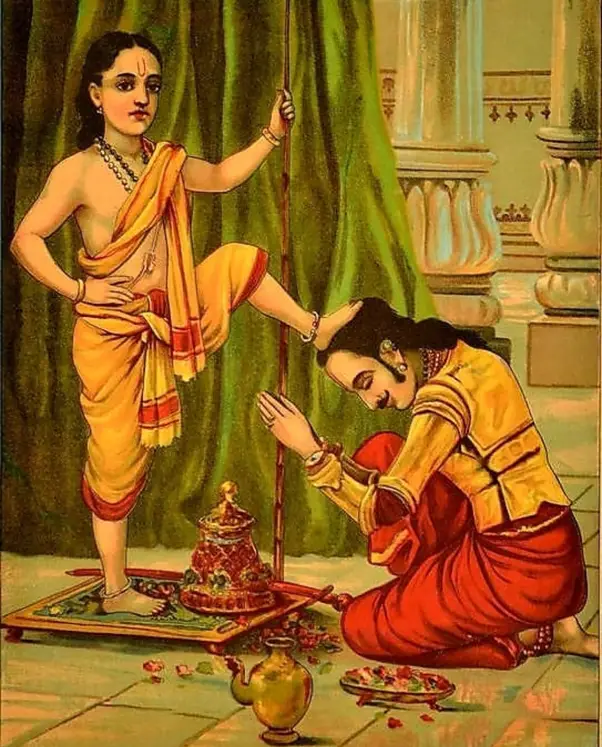
However, the attribution of this "equatorial" branch, or of its most important part, to the pygmoid type finds various confirmations in the anthropological literature, which frequently reports the hypotheses of the Montandon, according to which humanity would be differentiated by successive dichotomies; the first fission, in fact, would have precociously separated the pygmoids from the common ancestor stock of all the other races. In his reconstruction, Montandon in fact brings together all the African, Asian and steatopigid pygmies in a single large race in itself, which he keeps well separated from the Negroid proper.
In fact, isolated pygmoid groups are now dispersed over a rather large area: to cite a few examples, they are represented by populations such as the Yali of Indonesia, the Australian Barrineans (from northern Queensland and sensibly similar to the Tasmanians), the Malay Semang, the Aeta of the Philippines, the Andamanese of the Bay of Bengal. More or less all these "Negrilli" show a good degree of racial affinity with the African Pygmies (the inhabitants of the Andaman Islands, in particular, also for the appearance of the steatopygia) rather than with the "classic" and more recent Negroids.
In this perspective, therefore, it would seem to strengthen the idea that all the pygmoids of the world constitute the residual survival of what was once an originally unitary group., extended in territorial continuity between the Atlantic coasts of Africa, the southern shore of the Mediterranean, up to India and the Pacific Ocean; a hypothesis perhaps more likely than the alternative one, which interprets them as the result of adaptive responses, to particular environmental conditions, developed in more recent times by different lineages of normal stature and separately from each other (therefore , unlikely, on more than one occasion and arriving at phenotypically very similar results).
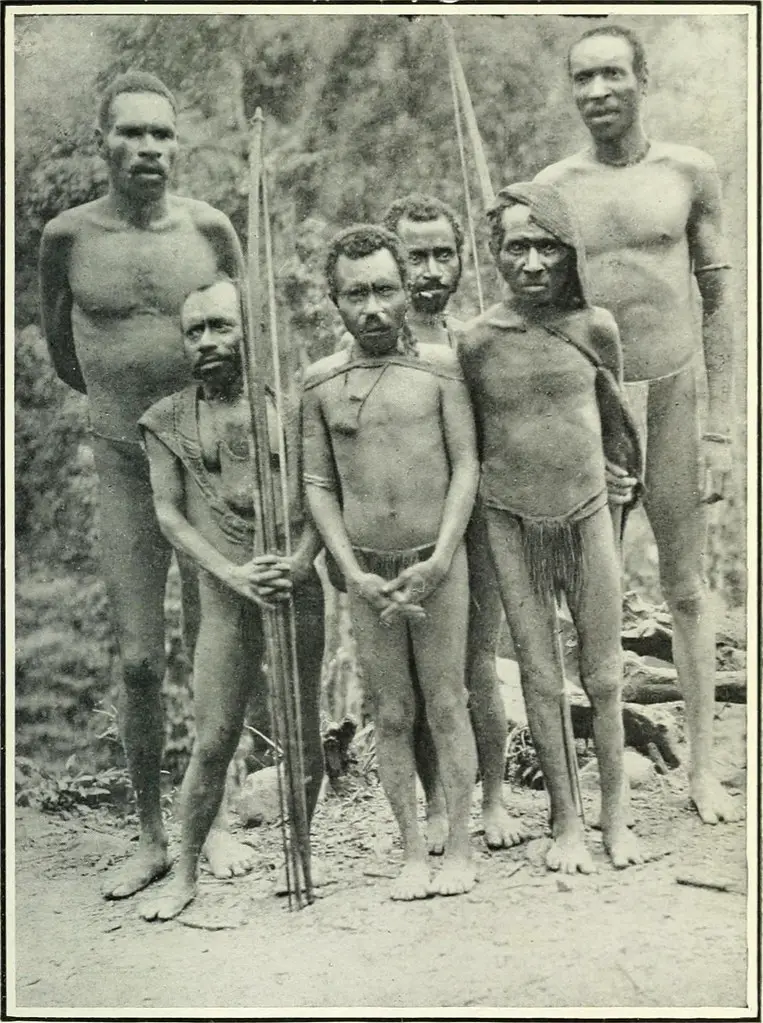
In addition to the racial point of view, other authors have highlighted the fact that all the pygmoids of the world would also have similar cultural traits; in particular Alain Daniélou highlights surprising convergences between the culture of the African Pygmies and that of the Munda of north-western India (area that according to some authors played an important role in the initial genesis of the black races). On the other hand, all this does not mean that these populations - from a monophyletic point of view - despite having left the Northern Eden very early, do not yet retain some particularly significant ancestral memories.
Mircea eliade, for example, indicates how the same primordial symbolism of Axis Mundi is found among these, citing specifically the Semang of the Malacca peninsula, who pass on the idea that in the center of the world, in mythical times, there was an immense rock: in this regard, also René Guénon confirms that the lithic symbol can certainly be interpreted as a clear image of the planetary axis. Various other aspects of the spiritual life of the pygmoid populations do not appear absolutely so poor and elementary as - according to a reductive evolutionary-progressive perspective - one could erroneously infer: for example the Pygmies of Africa are monotheists, an element that in the opinion of Frithjof Schuon is primordial and older than other religious forms.
Even the most external cultural expressions - from the artistic aspects to those more related to material techniques - can seem very sparse and essential in the pygmoids, but this does not necessarily imply a roughness transposed also on the spiritual level. On the contrary, it was noted the error generally committed by certain classical anthropology, which interprets the low complexity of cultural elements as a synonym of backwardness and "evolutionary delay"; on the other hand, the opposite possibility is not considered, namely the idea that the more sober the material symbol appears, the more pure, original and, indeed, articulated must be the theme to which it alludes.
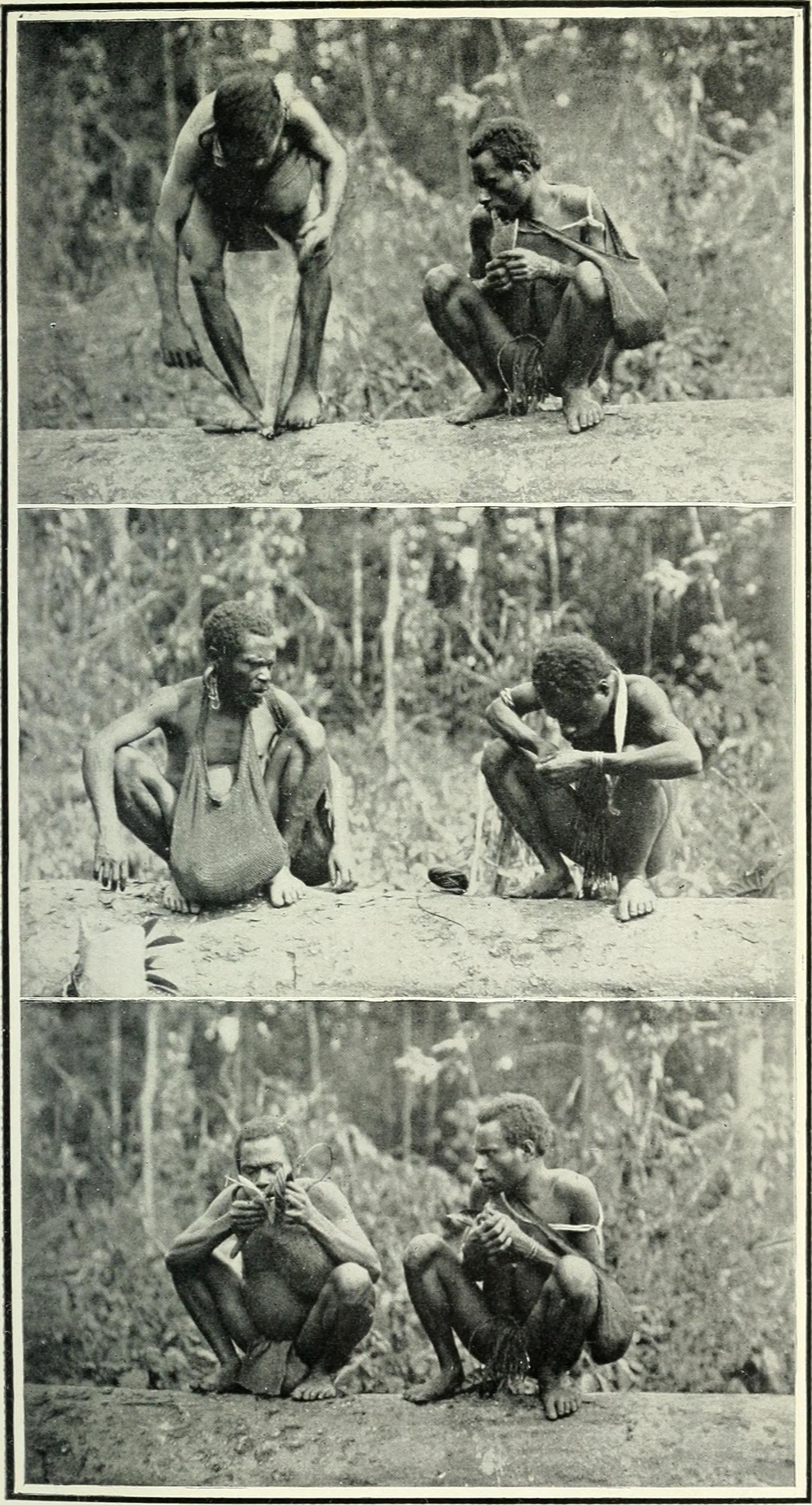
About this Guenon he pointed out how the assumption of a "primitive simplicity", understood as a conceptual elementarity of minds not yet "evolved", is completely free and indemonstrable. We could also place the ethnologist along the same line Leo Frobenius for which "spirit and eye are always complementary": That is, where expressive forms multiply (a phenomenon that we could define as a sort of" Baroque before its time"), It is precisely there that the spirit necessarily tends to impoverish itself, to empty itself of" high "meanings. At the limit, the phenomenon of perdita of the highest part of a certain sacral corpus (the metaphysical one, as Guénon would say) and the maintenance, often hypertrophic, of knowledge inherent to the "cosmological" and "soul" level; but, in fact, it is a question of “loss” of something previously possessed, not of the “failure to reach” a certain cognitive level.
Anyway, peoples almost totally devoid of material techniques, such as the Pygmies, retain a background of rather complex religious structures, not at all rough and elementary, which have not passed through the stage of an "original totemism", presupposed by a certain cultural anthropology of setting evolutionary as one of the obligatory steps of a hypothetical progressive trend.
Categories that therefore, except for the restricted and very specific field of technological achievements, do not at all support the idea of an "ascending" cultural / cognitive process of humanity, starting from the first stammering defined as "pre-logical" of a reason still considered childish, due to the more complex conceptions of the great, and "adult", historically attested civilizations. Significantly, as a general concept, the same is relevant AK Coomaraswamy is the "primitive" or "geometric" art of certain populations "without history" that still survive today at the "ethnological level" is formally abstract, precisely because it must essentially express abstract, incorporeal meanings that cannot be supported by anything immediate and material.
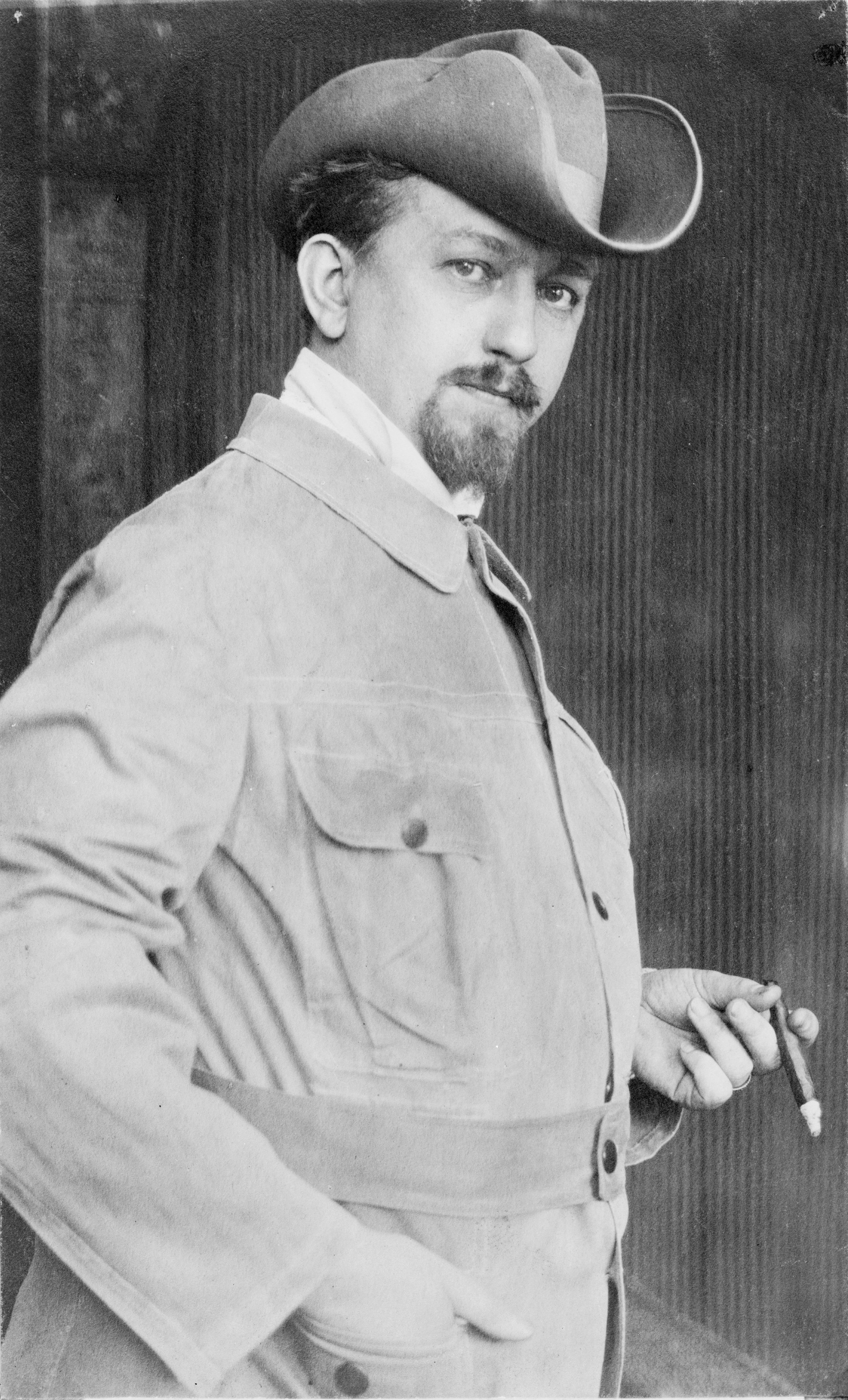
Even with regard to Africa more specifically, it seems to me useful here to recall the ethnologist's studies Leo Frobenius, which identified cultural elements such as to hypothesize a very ancient migration coming ultimately from Iceland and Greenland to the southern border of the inhabited land; Hyperborean civilization to which, for Frobenius, in particular the Bushmen but also the Pygmies themselves were linked and whose traces could be found in the close connection that he seemed to see between the rituals, albeit clearly more boreal, of the Upper European Paleolithic with the African one.
But, in addition to this, there are several researchers who have postulated in the black continent a clear anteriority of population of the pygmoid populations compared to all the others. Against a view that interprets the pygmoids as a mere recent (and independent "specialization", which arose in various areas of the world) of other populations of normal stature, authors such as, among others, can be cited Carleton Coon, who formulated the complex but stimulating idea of African Pygmies as partial progenitors of modern Negrids as a result of their re-crossing with the residues of the same ancestral trunk from which they would have originated by differentiation; of this ancestral trunk the Pygmies currently represent the most archaic survival, unlike the more recent Negrids. The latter, according to other researchers, would instead be the result of a direct hybridization of the Pygmies with populations already clearly differentiated in the Europoid sense.
In any case, it follows that the sub-Saharan Negrids, regardless of the various theories on the modalities of their formation, in general should be interpreted as overall more recent than the pygmoid populations (previous ref. "Mother Africa?"). In this direction, there are in fact many scholars who believe the Pygmies were once also geographically much more widespread than today, having formed a large prehistoric African substratum - extended between the Sahara, the eastern highlands and the Atlantic Ocean to the west - substratum prior to the rise of the classic "Black" type (with which it was also possible to verify subsequent partial re-crossings); the hypothesis seems also confirmed by more recent genetic analyzes according to which, in detail, the Pygmies seem to have mitochondrial and Y chromosome lines evaluated as extremely ancient, typical of one of the first African groups, and in any case certainly more archaic than those of the classical Negrids.
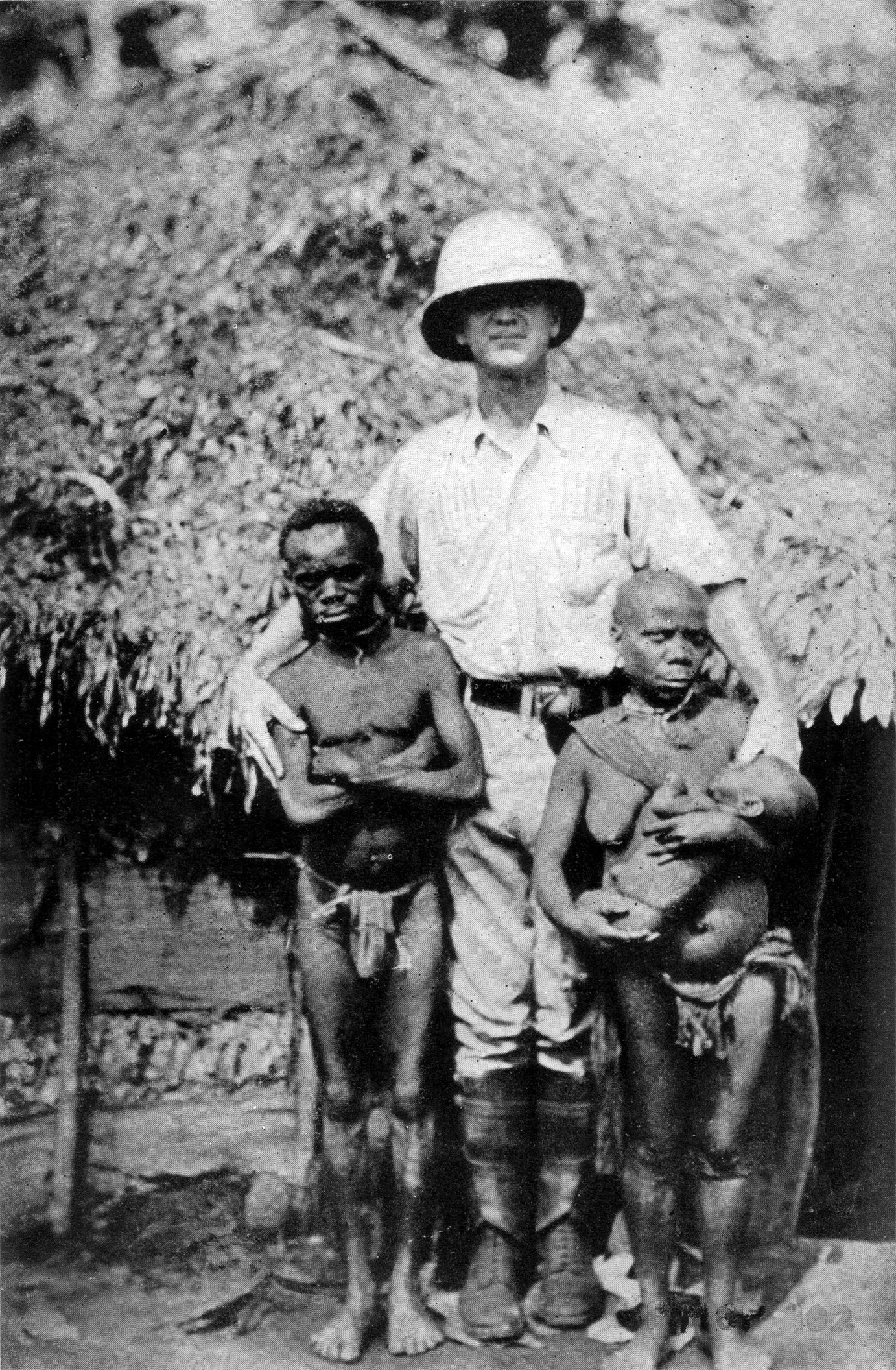
Cavalli Sforza himself points out among the Pygmies the very high frequency of numerous typically African markers, such as to nominate them as the most direct present-day remnant of the original "Proto-Africans" and also admitting, in ancient times, a probable greater territorial diffusion of these compared to today; other genetic studies would seem to reveal that three of the oldest peoples in the world today are the Biaka Pygmies of the Central African Republic, the Mbuti Pygmies of the Congo and the South African! Kung San.
But, in addition to the genetic data, there are also some linguistic-cultural elements that could be read in the same direction. For example, the original speech of the Pygmies of equatorial Africa today has practically disappeared after the adoption of that of the surrounding populations, but originally it would have been very similar to the language of the South African Khoisanid populations (Bushmen and Hottentots), with the characterizing presence of particular phonemes such as the famous "click"; according to some glottological theories, this substratum would also have constituted the basis from which above all the Bantu and Sudanese languages, now majority, would have arisen.
As for the mythical world, I had previously already mentioned that current Negrids often refer to enigmatic "Red Men" - not without a direct relationship with current Pygmies - that they were a pre-existing people and characterized by their small stature; it is interesting to note that Mircea Eliade also cites a similar myth present among the Dogon of Mali, according to whom the first legendary inhabitants of their region were the Negrillos - little blacks - indefatigable blacksmiths now disappeared underground and transformed into geniuses (interesting concept, this of the destination "hypoctonia", to which we will return later).

In other cases the Pygmies / Negrids ratio, although expressed in a different way, it would always tend to frame the latter as a culturally superior and temporally more recent element: in fact, there would be many customs and habits that the pygmy populations would have acquired from the Negrids, and the same economic-functional link established with them (for example, the proposition of the Pygmies as a lower "caste", at the service of the neighboring farmers) could be a further element indicating a certain anteriority of the Pygmies with respect to these, since normally it is the indigenous peoples subjected by the newcomers who are employed for lower level occupations.
On the contrary, the relationship from the genetic point of view would appear to be clearly reversed. In fact, both Coon and Cavalli Sforza indicate how the modalities of the crossing between the two elements are such that the flow always appears directed from the Pygmies towards the Negrids and almost never vice versa; this is the result of the fact that it is always the negrid males who unite with pygmy women, while the opposite case practically never occurs, and the offspring are always cared for in the highest economic-social sphere, that is the agricultural one. Consequentially, the pygmy tribes remain genetically intact and at the basic cultural level (hunting-gathering), while the mitochondrial DNA, which is transmitted exclusively by female and is of pygmy origin, invariably flows towards the populations of farmers.
All the aforementioned elements collected on pygmoid populations could support, in my opinion, a further hypothesis: although they undoubtedly belong to the same species Homo Sapiens, the particular phyletic position of these peoples in relation to the others - consequence of the early removal from the central nucleus of humanity, as soon as it became physical - could have considerably reduced the margins of consolidation of the biological-cultural characteristics achieved, making them a group particularly exposed to involutionary dangers Of every kind.
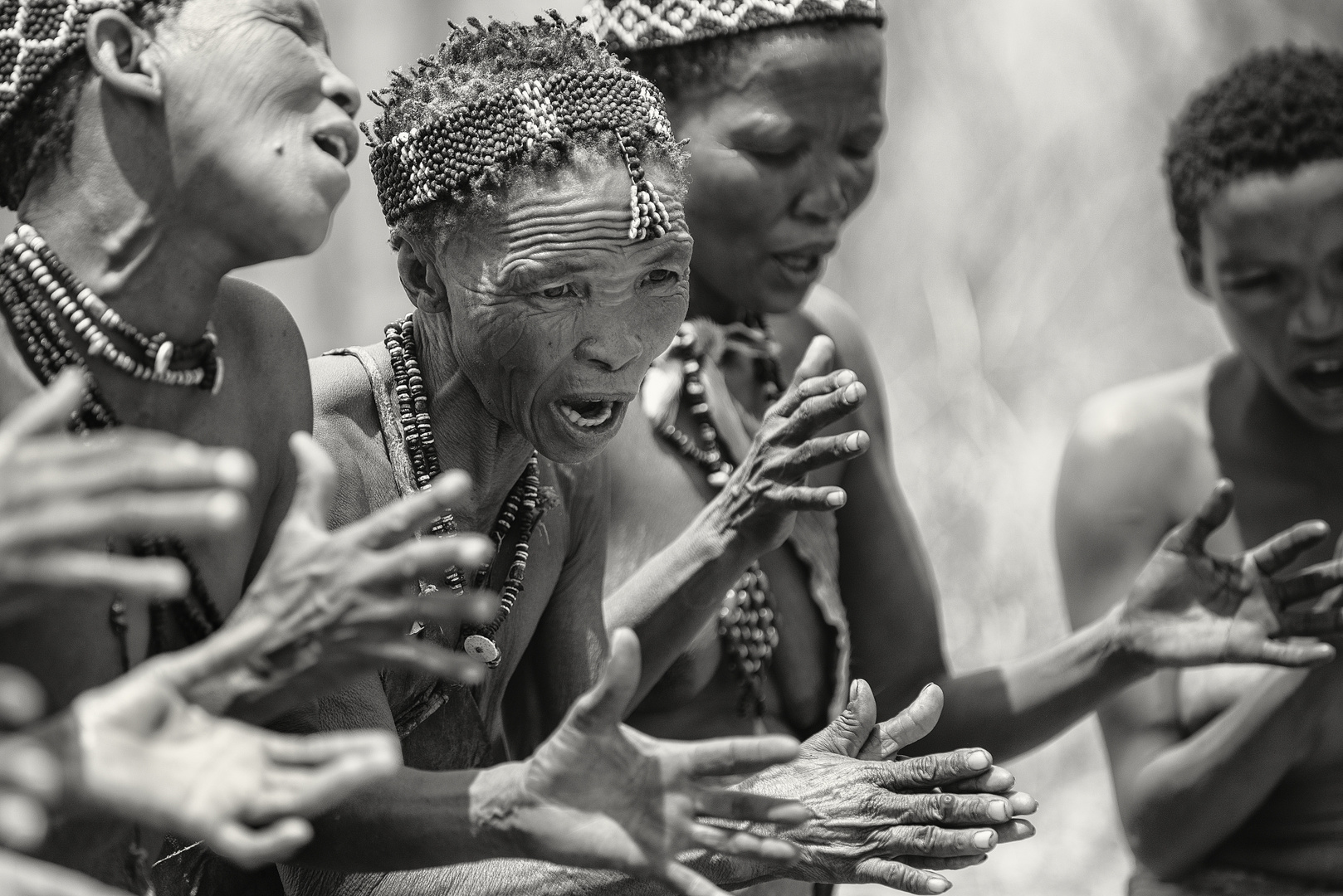
It is in fact significant that, even from an evolutionary-progressive perspective, Giuffrida-Ruggeri hinted at the hypothesis that the current pygmoids may be the descendants of those men who, as soon as they arrived at the erect station, then decided to "return to the forest" to adapt to it (while the Bushmen would represent those pygmoids then again released from the bush for more open habitats); also significant seems to be the observation that, in the few human groups that still do not possess the techniques of lighting and controlling fire (for example, the Andamanese and some African populations), this lack may be due not so much to methods that have never been possessed , but rather to a supervening renunciation to use them, or to the accidental loss of such knowledge that was once normally mastered.
A regression, therefore, which occurred in some cases only at the cultural level, and here at the moment stopped, but which in some others - more serious or prolonged - cannot be excluded also involved (or only) the biological level. This is not an anti-scientific idea, if for example we recall the hypotheses formulated by the researchers themselves regarding the controversial Romanian finds of Pestera Cu Oase, mentioned in the previous article "Which Evolution?". From a similar involutionary perspective, I would not exclude that the finds recently found on the island of Flores in Indonesia could also be interpreted, considered incongruous in relation to the normal “Sapiens” standards and renamed “Hobbit” due to their small skeletal and brain size.
Not presenting particular similarities with the homo erectus, "Hobbit" has been anthropologically named Homo Floresiensis, but, above all, it surprised the scientific community for its very recent dating - perhaps only 15-18.000 years - in relation to the morphological characteristics highlighted; on these, it is still debated whether they are due to the enuclearization of a new species within the genus Homo, or whether instead they are attributable to some (involutional?) pathology that would have affected a local Sapiens population, also given the relative similarity with today's pygmoid populations of the area. In any case, the hypothetical regressive process that would have affected the "Hobbits" could, paradoxically, have intervened more on the biological level than on the cultural one, since they would seem associated with artefacts whose level, elsewhere, is attributed only to Homo Sapiens.

These findings can probably be linked to those already mentioned by Coon himself, who mentions the discovery in Indonesia of two skeletons of small stature, perhaps "Negrites" and dating back to about 30-40.000 years ago. The American anthropologist also speculates here possible pygmoid migrations from Africa to Southeast Asia or vice versa: in the light of the last elements set out above, a direct direction of advancement could perhaps be more likely to Africa, which would have "left behind" the pygmoids or culturally or biologically less dynamic (with the later Asian finds from Flores as evidence of the regression that occurred) and brought only the most vital elements to the black continent: elements that would thus have had the force to mark the current African populations - or even someone else in the southern hemisphere - with those peculiar characteristics, genetically heterogeneous and statistically "aberrant", which today are instead interpreted in a completely opposite perspective, that is, most of the time in Afrocentric key along the lines of the previously mentioned “Out of Africa” theory. A theory that, in any case, more and more often also admits the hypothesis of consistent "ebbs" entering the black continent (but which from our point of view would be, instead, real first entries), which would go in the same direction as various elements of a mythological-folkloric, anthropological and linguistic nature already exposed in the previous article "Mother Africa?"
All this, ultimately, as a quick summary of what concerns the development of the "southern" branch of our species: a branch that, not surprisingly, today has different populations which, even in geographical terms, give the idea of their precocious moving away from the central core by being take refuge in those "Cul-de-sac"Peripherals that consist of the archipelagos and southern peninsulas (Patagonia, South Africa, southern Deccan, Indonesia, Australia) of the emerged lands. In the next article we will return to the North instead and we will try to frame the first events of the "boreal" branch of man, in the meantime remained in the vicinity of the offices where he had just come to become physicized.
Bibliography consulted for this article:
- Giuseppe Acerbi - Apam Napat, the value of Waters in Vedic literature and Hindu culture - Internet address: http://allependicidelmontemeru.blogspot.it/2014/06/apam-napat-il-valore-delle-acque-nella.html
- Giuseppe Acerbi - The myth of Gokarna and the dramatic battle between Perseus and Medusa - Internet address: http://allependicidelmontemeru.blogspot.it/2013/01/il-mito-del-gokarna_17.html
- Fabrizio Ardito / Daniela Minerva - The search for Eva - Giunti - 1995
- Oddone Assirelli - The monogenistic doctrine of Alfredo Trombetti - F.lli Lega - 1962
- Mario Bacchiega - Outlines of the history of religions - Bastogi - 1999
- Selene Ballerini - The body of the Goddess - Atanor - 2002
- André Barbault - Jupiter & Saturn - New Horizons - 1993
- Hugo A. Bernatzik - Peoples and Races - Le Maschere Publishing House - 1965
- Pierre Bertaux - Africa. From prehistory to current states - in: Universal History Feltrinelli - Feltrinelli - 1968
- Renato Biasutti - Races and Peoples of the Earth - UTET - 1959
- Franz Boas - Primitive man - Laterza - 1995
- Alessandro Bongioanni / Enrico Comba - Beasts or Gods? The animal in religious symbolism - Ananke - 1996
- Antonio Bonifacio - The Dogon: masks and souls towards the stars - Venexia - 2005
- Antonio Bonifacio - The cosmic cave. The power of shamanism in paleolithic rock art - Symmetry editions - 2005
- Luigi Brian - Human differentiation and systematics as a function of time - Marzorati Editore - 1972
- Titus Burckhardt - The spiritual key of Muslim astrology - SE - 1997
- Jacques Bril - Lilith or the disturbing aspect of the feminine - ECIG - 1990
- Mario F. Canella - Extinct and living human races - Sansoni - 1940
- Giuseppe Cardile - Prehistory (Legends and Science) - Nirvana Editions - 1932
- Luigi Luca Cavalli Sforza - History and geography of human genes - Adelphi - 1997
- Ernesta Cerulli - The African blacksmith, cultural hero - in: Studies and materials of the history of religions, XXVIII - 1957
- Maria Teresa Colonna - Lilith, the black moon and refused eros - Edizioni del Riccio - 1980
- Ananda Kentish Coomaraswamy - The great thrill. Essays on symbolics and art - Adelphi Edizioni - 1987
- Carleton S. Coon - The origin of the races - Bompiani - 1970
- Nuccio D'Anna - The keepers of the Grail - in: Arthos, n. 14 (new series) - 2006
- Nuccio D'Anna - The archaic religiosity of Hellas - ECIG - 1986
- Bernardino del Boca - The dimension of knowledge - Editions The Age of Aquarius - without indication of date
- Mircea Eliade - Metal arts and alchemy - Boringhieri - 1980
- Mircea Eliade - The myth of the eternal return - Borla - 1999
- Mircea Eliade - Images and symbols - TEA - 1997
- Mircea Eliade - Myths, dreams and mysteries - Rusconi - 1990
- Julius Evola - The path of cinnabar - Scheiwiller - 1972
- Julius Evola - The Hermetic Tradition - Mediterranean Editions - 1996
- Julius Evola - Metaphysics of Sex - Mediterranean Editions - 1996
- Find Druwid - The cycle of the year - Editions of the Trident - 2004
- Leo Frobenius - History of African civilizations - Bollati Boringhieri - 1991
- Vincenzo Giuffrida-Ruggeri - On the origin of man: new theories and documents - Zanichelli - 1921
- Georg Glowatzki - The human races. Origin and diffusion - La Scuola Publishing - 1977
- Marco Grosso - The secrets of the black moon - Arktos Editions - 2004
- Renè Guenon - The Demiurge and other wise men - Adelphi - 2007
- Renè Guenon - The Kingdom of Quantity and the Signs of the Times - Adelphi - 1995
- Renè Guenon - The symbolism of the Cross - Luni Editrice - 1999
- Renè Guenon - Necessary clarifications - The winged horse - 1988
- The Pygmies: isolated for 60.000 years - Le Scienze website - 10/04/2009 - Internet address: http://www.lescienze.it/news/2009/04/10/news/i_pigmei_isolati_da_60_000_anni-575456/
- Adolf Ellegard Jensen - How a primitive culture conceived the world - Einaudi Scientific Editions - 1952
- Victoria LePage - Shambhala. The Lost Paradise - Armenia - 1999
- Silvano Lorenzoni - Alternative Cosmology - Primordia Publishing House - 2010
- Silvano Lorenzoni - The Wild. Essay on human degeneration - Ghénos Editions - 2005
- Geraldine Magnan - In search of Adam - in: Science and Life, n. 7 - July 1998
- Vittorio Marcozzi - Man in space and time - Ambrosiana Publishing House - 1953
- Claudio Mutti - The symbolism of the Swan in the Ob-Ugrica tradition - in: Vie della Tradizione n. 14 - April / June 1974
- Clara Negri - Lilith the Black Moon in astrology - New Horizons - 1993
- Romano Olivieri - European breeds - Alkaest - 1980
- Steve Olson - Maps of human history. The past that is in our genes - Einaudi - 2003
- Ester Panetta - African pygmies and pygmies - Guanda - 1959
- Raffaello Parenti - Physical anthropology lessons - Giordano Pellegrini Scientific Library - 1973
- Tabitha M. Powledge - Flores' little men challenge anthropology - in: Darwin - March / April 2007
- Giorgio Pullè - Races and nations - CEDAM - 1939
- Daniela Puzzo - The Tree, the Snake, the Apple - in: Vie della Tradizione, n. 119 - July / September 2000
- Laura Rangoni - Wild women. From the Goddess to the witch: paths of female shamanism - Ananke - 2002
- Mario Quagliati - The strange case of the pygmy ancestor - in: Hera - December 2004 (and also on the website of the Centro Studi La Runa, internet address: http://www.centrostudilaruna.it/uomodiflores.html )
- Frithjof Schuon - Looks on ancient worlds - Mediterranean Editions - 1996
- Frithjof Schuon - In the footsteps of perennial religion - Mediterranean Editions - 1988
- Giuseppe Sermonti - The Moon in the Woods. Essay on the origin of the monkey - Rusconi - 1985
- Jean Servier - Man and the invisible - Borla - 1967
- Roberto Sicuteri - Lilith, the black moon - Astrolabe - Ubaldini - 1980
- Alfredo Trombetti - The original unity of language - Treves bookshop by Luigi Beltrami - 1905
- A genetic map of Africa - Le Scienze website - 01/05/2009 - Internet address: http://www.lescienze.it/news/2009/05/01/news/una_mappa_genetica_dell_africa-575206/
- Modern man ... or almost - Anthropos website - 17/1/2007 - internet address: http://www.antrocom.it/textnews-view_article-id-956.html
- Gastone Ventura - Traditional historical considerations on the myth of the Queen of Sheba - Editions of Vie della Tradizione - 1996
- Nicholas Wade - Dawn of Man. Journey into the origins of our species - Cairo Editore - 2006
- Kate Wong - Little Men - in: The Sciences - April 2005
- Kate Wong - Latest on the man of Flores - The Sciences - January 2010 (article also contained in the book-collection "The journey of man" published by Le Scienze - 2014)

A comment on "North-South: the first human dichotomy and the separation of the southern branch"